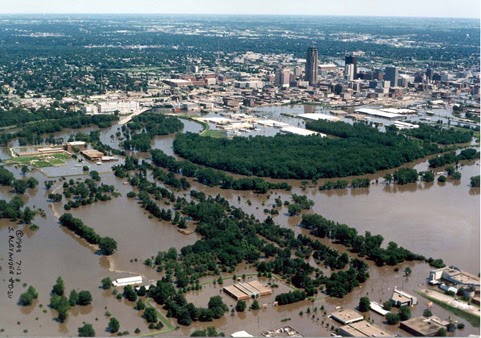Flooding
Floods are one of the most common hazards in the United States and may occur during any month of the year in Iowa. A flood is defined when water overflows onto normally dry land. Not all floods are alike; they happen on different scales of space and time. The main types of floods are:

Source: Weather.gov
Did You Know?
Floods across the state are most frequent in June, which has the highest average rainfall of any month (4.64 inches). One of the most destructive floods on record for the state occurred during the Summer of 1993 when the Mississippi River topped its banks after weeks of rainfall. You can learn more about this event at this link.